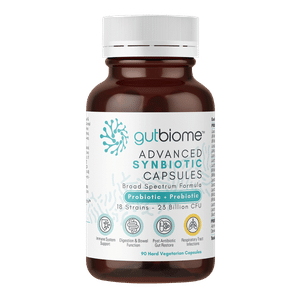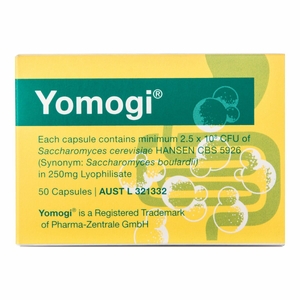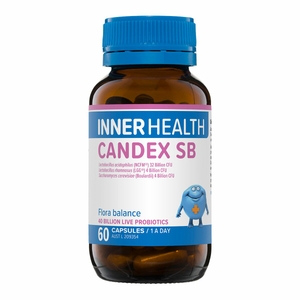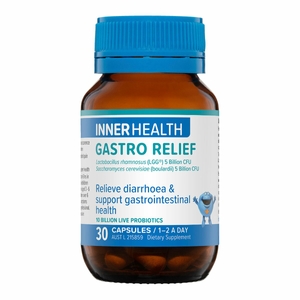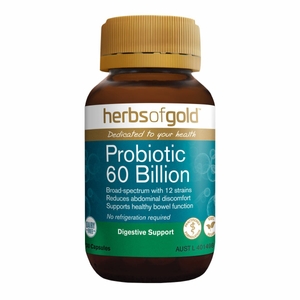
What are probiotics?
Probiotics are living bacteria and yeast that have health benefits, particularly for the digestive system, when consumed in sufficient quantities (1).
Probiotics can be found in supplements (in capsule, pill, powder, or liquid form) and in some fermented foods, such as yoghurt, kefir, sauerkraut, kimchi, miso, tempeh, and kombucha.
Probiotics are classified by their genus (e.g., Lactobacillus), species (e.g., plantarum), and strain (e.g., 299v). It is important to select the right strain to align with your desired benefits, as the effects can differ significantly between strains (2).
The two most common probiotics found in supplements and food are Lactobacillus and Bifidobacterium (3). Saccharomyces Boulardii is a beneficial yeast that is commonly used in probiotic products (3).
Some common myths and misconceptions
Myth: All probiotics are the same
Fact: Probiotics include various microorganisms, each with distinct characteristics and potential health benefits (2). The efficacy of probiotics depends on their ability to address specific health conditions.
For example, Lactobacillus rhamnosus GG is effective for conditions like diarrhoea, inflammatory bowel disease (IBD), irritable bowel syndrome (IBS), eczema, and allergy prevention (4). In contrast, Bifidobacterium breve BR03 is beneficial for insulin resistance, exercise recovery, and weight management (5,6).
Myth: More probiotics are always better
Fact: Consuming excessive amounts does not guarantee better results, as effectiveness depends on the quantity of live organisms that reach your gut alive (7).
The optimal dose can vary depending on the specific strains used and your health needs (2).
Follow recommendations and consult a healthcare professional if unsure about the appropriate amount for you.
Myth: Probiotics are unnecessary if you have a healthy diet
Fact: Despite a balanced diet, modern lifestyles, stress, and antibiotic use can disturb the delicate balance of gut bacteria (8). Probiotics can help restore this balance and provide additional support for optimal gut health, making probiotics a valuable addition to overall wellness (9,10).
Myth: All probiotics colonise the gut
Fact: While some probiotics can temporarily colonise the gut, wherein they adhere to the intestinal lining and become permanent residents of the gut, this is not a requirement for them to be beneficial (11,12).
Probiotics exert their benefits through interactions with your existing gut microbiota and your immune system (9,13). They promote a more balanced and diverse microbial community, and produce various compounds, such as short-chain fatty acids and antimicrobial substances that improve your gut environment (10,13).
Myth: A greater number of probiotic strains is beneficial
Fact: Probiotic treatment is strain-specific; however, multi-strain probiotics may also provide benefits (14,15,16).
Benefits of multi-strain probiotics (14,16:
- Complementary effects: different probiotic strains can have varying effects on your body. By combining multiple strains, you increase the likelihood of achieving a broader spectrum of health benefits. Certain strains may strengthen the immune system, while others may promote digestive health and reduce inflammation.
- Enhanced resilience: the presence of multiple strains may increase the chances of some strains surviving adverse conditions caused by factors such as stress, antibiotics, or dietary changes.
Benefits of single-strain probiotics (2,15):
- Focused effects: single-strain probiotics are useful when a specific strain has been extensively studied for its health benefits, dosage, and safety profile.
- Simplicity and convenience: single-strain probiotics are simple and convenient. They are beneficial when you want to add a particular strain to your diet without combining it with other probiotics.
Myth: All probiotics need refrigeration
Fact: Not all probiotics require refrigeration, but they do need to be protected from heat (17). Both the probiotic strain and the manufacturing process determine how you should store your probiotics.
Many factors affect probiotics’ survival and efficacy, including (18,19):
- Humidity
- Temperature
- pH of the environment
- Packaging
- Type of strain
- Life stage of probiotics
Some probiotic strains are more resilient and can remain stable at room temperature for extended periods, making them shelf-stable and convenient for storage and travel (16). On the other hand, certain probiotic strains are more sensitive to environmental factors like temperature, humidity, and oxygen exposure, leading to a shorter shelf life and faster die-off (17,19).
Manufacturers use various methods such as microencapsulation, cryoprotectants, freeze-drying, genetic modification of probiotic strains, and improved packaging (such as blister packs) to prolong bacteria survivability (20,21,22).
These advancements have led to the development of more shelf-stable probiotic strains that can withstand higher temperatures and do not require refrigeration. These robust probiotic strains are becoming more widely available and convenient if you do not have access to refrigeration or prefer on-the-go options.
Key take-away
Probiotics have a significant ability to improve numerous aspects of health, such as gut health, digestion, immunity, mental health, and cardiovascular function. Achieving the best results requires consistent use.
While probiotic treatment is strain-specific, both single-strain and multi-strain probiotics offer their own unique advantages.
It's essential to store probiotics properly, considering factors like temperature, humidity, and strain resilience. Always read the label to know what is required for each product.
While probiotics are generally considered safe, always consult a healthcare provider before starting any new supplement, including probiotics.

